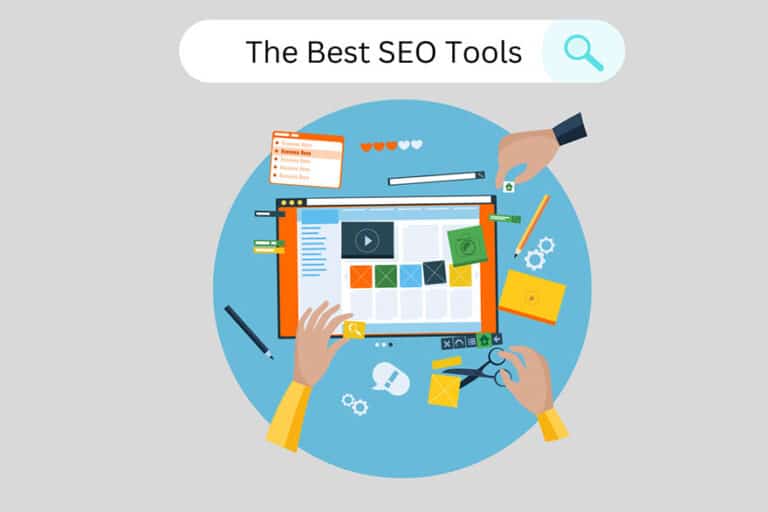What Am I Doing Wrong?
You’re a dedicated, resourceful, small business owner working relentlessly to build your brand. You’ve got a website and it looks great. You’ve purchased and registered your very own website address, invested in great photos and you’ve been advertising on Facebook and Linkedin every day…
So why aren’t you getting the online leads and sales you expected?
If you’re a small business owner with a website, you can probably relate to the above sentiments. Your website is your digital storefront and although your doors are wide open for business with flashing neon signs to lure potential customers, the orders are just not rolling in as quickly as you expected.
Get Out of Your Own Way!
Learning to understand the internet can feel overwhelming when you’re managing and promoting a business by yourself, but you can make your job a little easier by getting out of your own way.
Have you ever conducted a search for your own business? Have you considered searching for similar businesses in your area to determine what marketing and promotional strategies your competitors may be using? Are you making it easier or more difficult for local business to find you? Here are some interesting statistics concerning user experience from BrightLocal’s 2016 report:
• 69% of users search for a local business at least 6x per year
• 91% of users read online reviews for local businesses
• 73 % distrust a business or brand listed inaccurately
• 61% of users search for a local business on their smartphone (up from 38 per cent in 2015)
• 90% of users read at least 10 reviews of a local business before they can trust the business
• 73% of users do not trust a business with inaccurate business information
• 88% of users will visit a business they have searched online within 24hrs
• 74% claimed that positive business reviews build trust in the business
You can read the full BrightLocal report here if you like: (https://www.brightlocal.com/learn/local-consumer-review-survey/)

Inaccurate business listings, poor reviews and low gold-star ratings are among the top reasons your website may be underperforming in local search results. Search engines are increasingly focused on improving their local search results. Google’s Local Search is the most commonly used, and the first three listings that appear in the local search results receive 93% of all traffic from search engines. If your business listing does not appear in the top three results, you’re missing out on significant local traffic.
Statistics prove that users are increasingly qualifying their search for products and services by location. If you’re looking for a dentist, you probably want one who is as close to your location as possible (dentist Toronto). If you’re ordering pizza or comparison-shopping for the best deal on a new laptop or phone, you’re more likely to look for a dealer located close to you.
Your potential customers are no different. By making it easy for web crawlers to identify and confirm your physical location, you can optimize your website for maximum local traffic. Significant changes to Google’s algorithm have been implemented to drastically improve local search results and reduce duplicate content by rewarding websites with relevant content and geo-proximity. If your website content is relevant to a user’s search and relevant to the user’s geo-proximity, Google will raise your visibility and you’ll appear much higher on the results page.
If you’re planning to launch your small business or hoping to revitalize your website for better traffic, follow these five helpful tips:
5 Tips To Improve Local Traffic To Your Website:
1. Choose a top-level-domain that is local: If you’re a business owner located in Toronto, including the location of your business in your website address (i.e. www.jennydesignstoronto.com) is a sure-fire way of attracting a search engine’s attention. Google’ web crawler prefers SEO-friendly URL’s that are easily recognizable. If you include your city location, Google will index you as a relevant match for any local search. This may not be possible if you already have a URL for your brand/company, but if the site isn’t too old or established you can always consider registering the new local focused domain and implementing a 301 redirection from your current URL to the updated URL.
2. Register with Search Engines & Local Directories – Google, YELP, Bing, YellowPages, N49: It’s probably one of the easiest things you can do to have an immediate impact on your website traffic. Create a business listing in Google My Business, YELP, and Bing, the three most popular search engines in North America. With your business address listed, search engines will quickly be able to determine the legitimacy of your business and confirm its location.
3. NAP consistency and info across all pages & citation listings: Conduct an audit of your existing website to make sure that your name, address and phone number (NAP) appears consistently across all pages of your website. Errors and misspellings confuse a search engine’s web crawler, making it difficult to authenticate the legitimacy of your business. Search engines use your NAP info to establish a relevant search match. Someone searching on their mobile phone for a local restaurant will find listings relevant to their present location. You’ll capture local business as well as anyone who happens to be close to you. Make sure you run an audit across all the most popular local web directories to make sure your citations all have the correct NAP information as well.
4. Create separate landing pages for different locations: Do you have more than one physical business location in your city? Don’t list them on one page; create separate landing pages for each. You’ll drive traffic directly to those pages and anyone searching for service in that location will find you. If you list the locations on a single page, local search results will prioritize business listings that have a dedicated page for the address over yours because they offer more relevant content for the user.
5. Generate reviews: Positive reviews of your business are the number one factor that impacts a user’s decision. Reviews help establish trust and trust is the key to earning new business. If clients read positive reviews of your business from reliable sources (Google Reviews) they are far more likely to visit you in person, send an email inquiry, join your subscription list, or purchase a product. Encourage your customers to leave reviews on Google Review. Offering incentives or rewards is unethical but you can invite customers to share their experience of your service through social media or provide an impartial review simply by capturing their feedback. A strategically crafted click-through landing page can be very effective for capturing user feedback and reviews. (See this link for an example: http://unbounce.com/design/winning-click-through-landing-page/ ). After interacting with your customers, a thorough follow up process should be executed in which you kindly ask for a review and direct them on how to take the next steps.
These are just 5 basic tips to get the ball rolling on local SEO optimization, for more information on how to get your site ranking at the top of the Google Local 3 pack, reach out and book a free consultation today.





